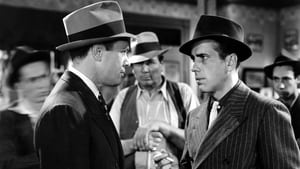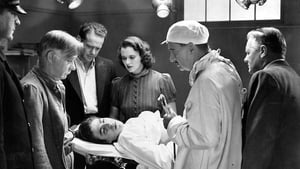Contact: info@alwanfilm.com
Video Sources 0 Views
- Watch trailer
- You Can't Get Away with Murder


Synopsis
Table of Contents
ToggleReview: You Can’t Get Away with Murder 1939 Colorized – A Gripping Noir Thriller Illuminated in Vivid Color

Introduction
“You Can’t Get Away with Murder” (1939) stands as a gritty testament to the allure of film noir and the darker side of human nature. In this article, we’ll delve into the significance of this early colored film, exploring its impact on audiences and its enduring legacy in the realm of crime thrillers.
Check The Full Colorized Movies List
Check Our Colorized Movies Trailer Channel
Understanding You Can’t Get Away with Murder 1939 Colorized: Director, Cast, and Genre
Directed by the talented Lewis Seiler, “You Can’t Get Away with Murder” (1939) showcases his mastery of suspense and tension-building techniques. The film features a stellar cast, including Humphrey Bogart and Billy Halop, whose performances captivate viewers with their intensity and raw emotion. Blending elements of crime, drama, and noir, “You Can’t Get Away with Murder” (1939) transports audiences to the seedy underbelly of society, where morality is a luxury few can afford.
Exploring the World of You Can’t Get Away with Murder 1939 Colorized: Plot and Characters
At its core, “You Can’t Get Away with Murder” (1939) follows the harrowing journey of a young delinquent, portrayed by Billy Halop, who becomes embroiled in a life of crime after falling under the influence of a ruthless gangster, played by Humphrey Bogart. As he descends deeper into a world of violence and corruption, he must confront the consequences of his actions and grapple with the moral ambiguity of his choices. Along the way, he encounters a cast of colorful characters who test his resolve and challenge his perceptions of right and wrong.
The Art of Film Colorization
Film colorization serves as a transformative tool that enhances the visual experience of classic movies, breathing new life into timeless stories and captivating audiences with vibrant hues. By digitally adding color to black and white films, colorization allows viewers to immerse themselves in the rich tapestry of cinematic worlds, exploring every shadow and highlight with fresh eyes and renewed appreciation.
Early Colored Films: A Brief History
The history of colored films traces its roots back to the early days of cinema, with filmmakers experimenting with various techniques to add color to their creations. From hand-tinted frames to early Technicolor processes, the evolution of colored film has been marked by innovation and ingenuity, paving the way for the development of modern colorization techniques that continue to captivate audiences to this day.
You Can’t Get Away with Murder 1939 and Its Early Colored Version
The decision to release “You Can’t Get Away with Murder” (1939) in a colorized format was met with both excitement and trepidation. While some welcomed the opportunity to experience the film in vibrant color, others expressed concerns about the potential impact on its visual aesthetic. Nevertheless, the early colored version of “You Can’t Get Away with Murder” (1939) offers viewers a fresh perspective on the gripping noir thriller, enhancing its atmospheric qualities and immersing audiences in its shadowy world of crime and deception.
The Debate Over Film Colorization
The debate over film colorization continues to divide audiences and critics alike, with proponents praising its ability to breathe new life into classic movies and introduce them to a new generation of viewers, while detractors argue that it compromises the artistic integrity of the original work and diminishes its historical significance. As the debate rages on, filmmakers and audiences alike are left to ponder the merits and drawbacks of colorization in the ever-evolving landscape of cinema.
Examining You Can’t Get Away with Murder 1939 as an Early Colored Film
As with any colorized classic, the impact of colorization on “You Can’t Get Away with Murder” (1939) is a matter of personal interpretation. Some may argue that it enhances the film’s visual appeal and immerses viewers in its world, while others may feel that it detracts from the stark beauty of the original black and white version. Regardless of one’s stance on the issue, there’s no denying the enduring power of “You Can’t Get Away with Murder” (1939) as a gripping noir thriller that continues to captivate audiences with its atmospheric storytelling and unforgettable performances.
Influence and Legacy: You Can’t Get Away with Murder 1939 Colorized’s Impact on Cinema
“You Can’t Get Away with Murder” (1939) has left an indelible mark on the world of cinema, inspiring countless filmmakers and captivating audiences with its gritty portrayal of crime and punishment. From its moody cinematography to its morally ambiguous characters, the film continues to resonate with viewers of all ages, reaffirming its status as a classic of the noir genre.
Director’s Cinematic Legacy: Beyond You Can’t Get Away with Murder 1939 Colorized
Lewis Seiler’s influence extends far beyond “You Can’t Get Away with Murder” (1939), with a diverse body of work that spans multiple genres and styles. From crime thrillers to war dramas, Seiler’s films are celebrated for their gripping narratives, dynamic characters, and atmospheric visuals, solidifying his legacy as one of Hollywood’s most versatile directors. Through his groundbreaking work, Seiler has left an indelible imprint on the world of cinema, inspiring generations of filmmakers to explore the darker side of human nature and push the boundaries of storytelling.
Themes Explored in You Can’t Get Away with Murder 1939 Colorized
“You Can’t Get Away with Murder” (1939) explores a myriad of themes, from the corrupting influence of crime to the elusive nature of justice. Through its morally complex characters and atmospheric storytelling, the film invites viewers to ponder the consequences of their actions and grapple with the blurred line between right and wrong. As audiences immerse themselves in the world of “You Can’t Get Away with Murder” (1939), they are reminded of the harsh realities of life on the fringes of society and the timeless allure of the noir genre.
Reception and Controversy Surrounding You Can’t Get Away with Murder 1939 Colorized
Upon its release, “You Can’t Get Away with Murder” (1939) received widespread critical acclaim, with many praising its atmospheric cinematography, gripping storyline, and standout performances. However, the decision to release the film in a colorized format sparked debate among purists, reigniting the age-old discussion surrounding film preservation and artistic integrity. Despite the controversy, “You Can’t Get Away with Murder” (1939) remains a beloved classic that continues to captivate audiences with its timeless appeal and enduring relevance.
Where to Watch You Can’t Get Away with Murder 1939 Colorized Online
For those eager to experience the gripping thrills of “You Can’t Get Away with Murder” (1939), the film is readily available on popular streaming platforms such as Netflix, Amazon Prime, and Hulu. Whether you choose to watch it in its original black and white format or the early colored version, “You Can’t Get Away with Murder” (1939) promises to keep you on the edge of your seat with its atmospheric storytelling and unforgettable performances.
FAQs About You Can’t Get Away with Murder 1939 Colorized
Q: Is “You Can’t Get Away with Murder” (1939) based on a true story? A: No, “You Can’t Get Away with Murder” (1939) is a fictional tale crafted by screenwriters Robert Buckner and Don Ryan, who drew inspiration from their own experiences and observations of the criminal underworld.
Q: Who are the main actors in “You Can’t Get Away with Murder” (1939)? A: “You Can’t Get Away with Murder” (1939) features a talented ensemble cast, including Humphrey Bogart, Billy Halop, and Gale Page, whose performances bring the film’s gritty world to life with raw emotion and intensity.
Q: What awards did “You Can’t Get Away with Murder” (1939) win? A: While “You Can’t Get Away with Murder” (1939) did not win any major awards, it received critical acclaim for its atmospheric cinematography, gripping storyline, and standout performances.
Q: Why was “You Can’t Get Away with Murder” (1939) released in a colorized format? A: The decision to release “You Can’t Get Away with Murder” (1939) in color was made to introduce the film to a new generation of viewers and enhance its visual appeal for modern audiences. While the choice to colorize the film sparked debate among purists, it ultimately allowed “You Can’t Get Away with Murder” (1939) to reach a wider audience and ensure its continued relevance in the annals of cinematic history.
Conclusion
“You Can’t Get Away with Murder” (1939) remains a gripping noir thriller that continues to captivate audiences with its atmospheric storytelling, unforgettable performances, and enduring relevance. Whether viewed in its original black and white format or the early colored version, the film serves as a timeless testament to the allure of the noir genre and the darker side of human nature. So, whether you’re a seasoned cinephile or a casual moviegoer, take a moment to revisit “You Can’t Get Away with Murder” (1939) and experience the magic of classic cinema at its finest.












